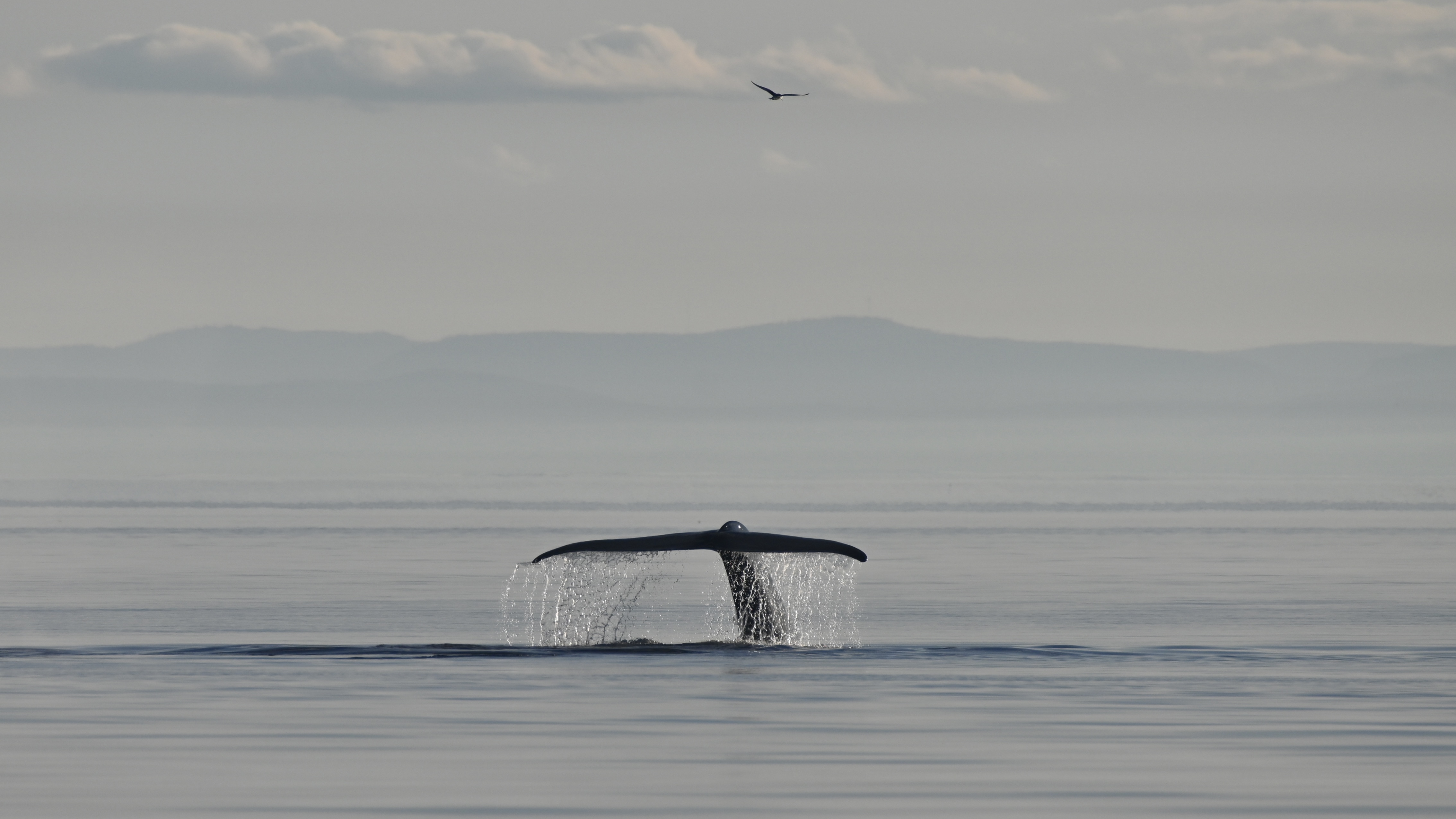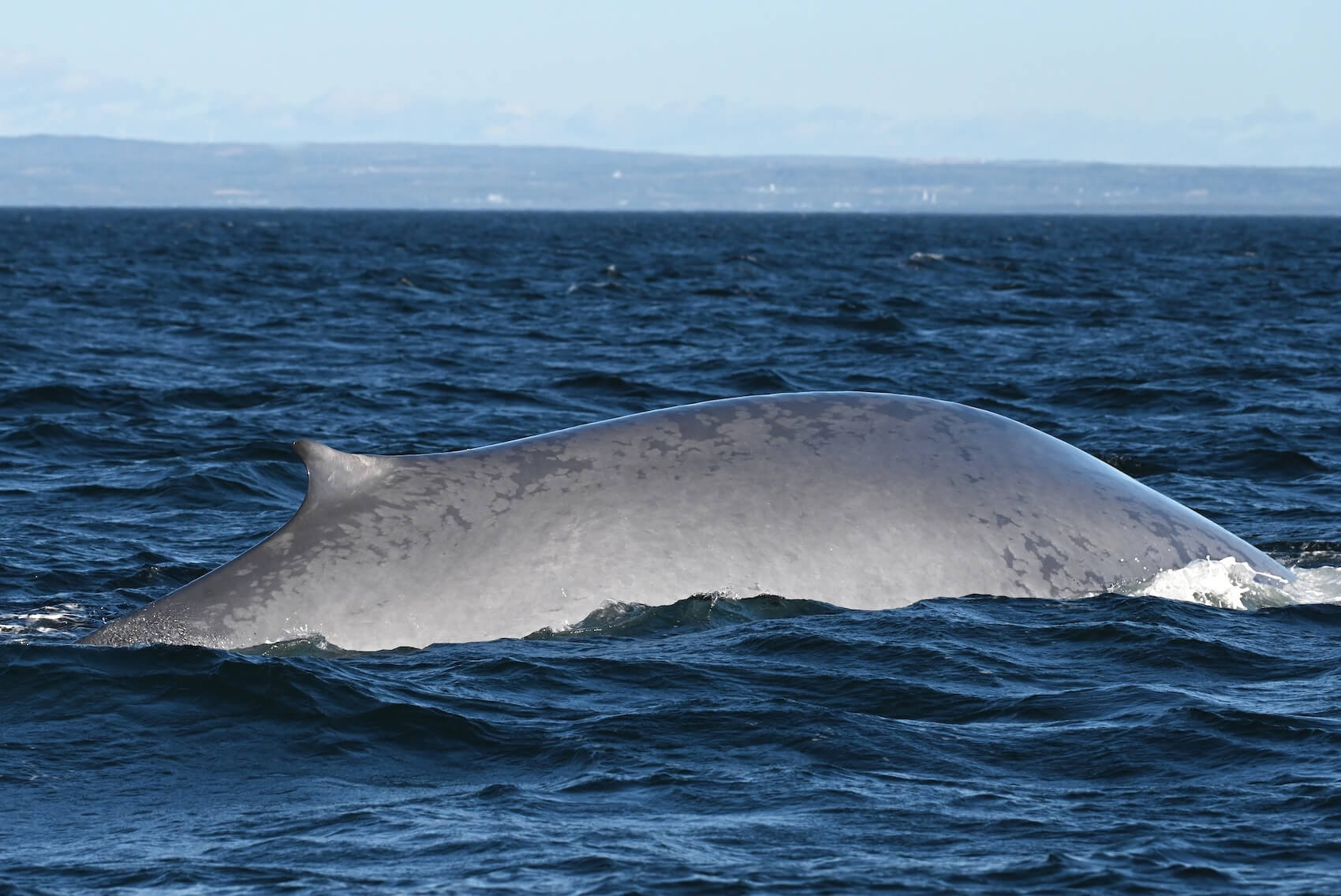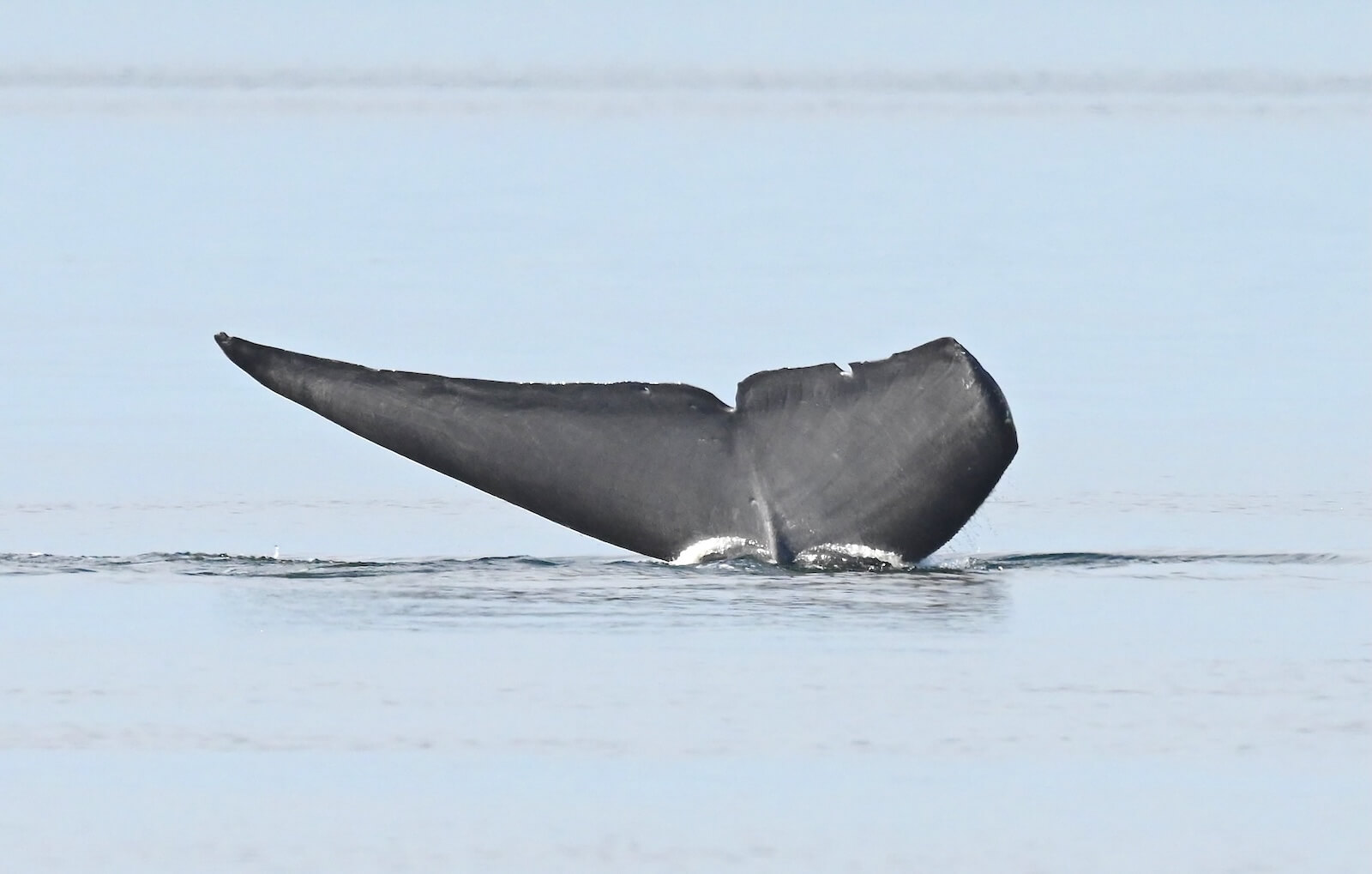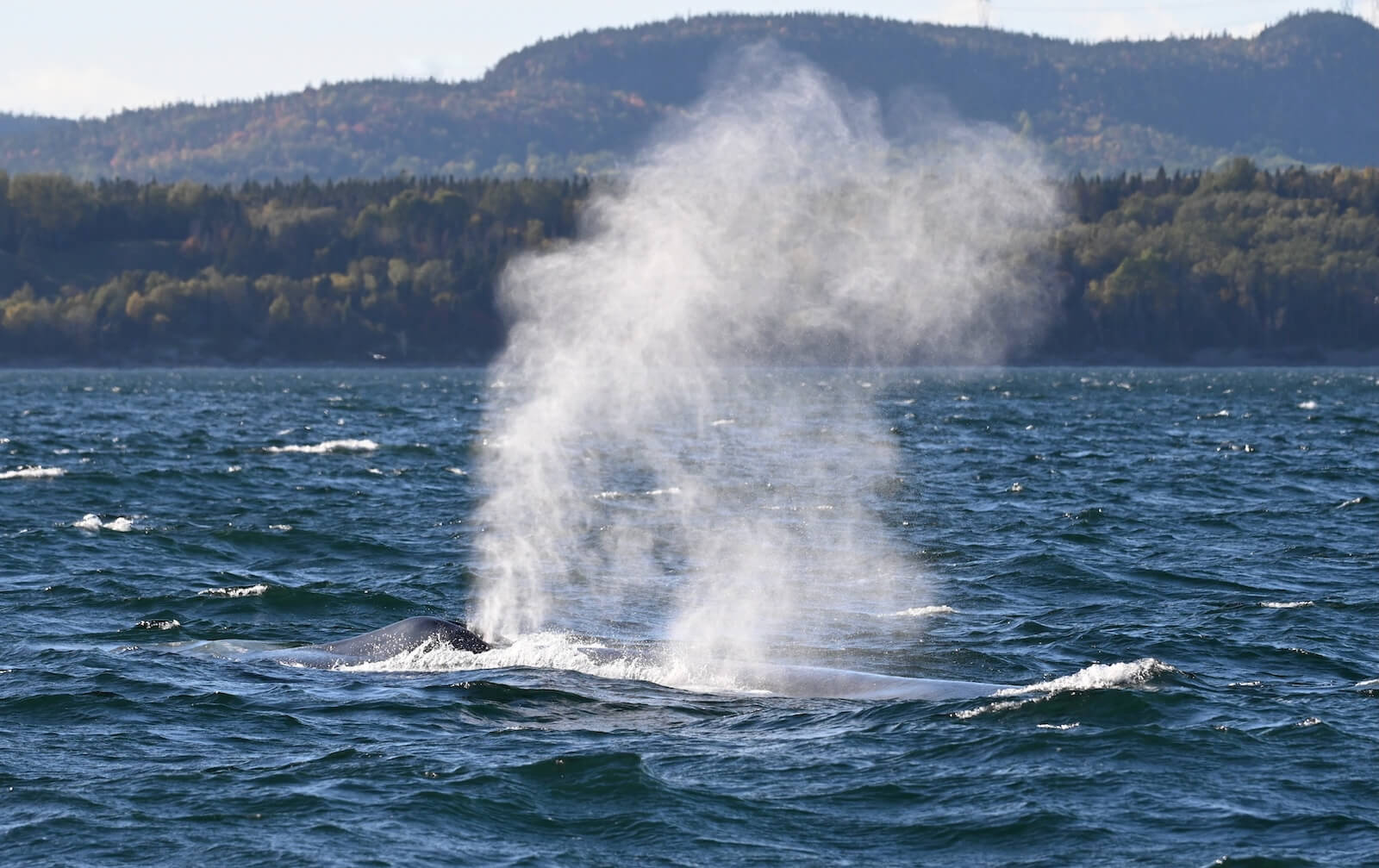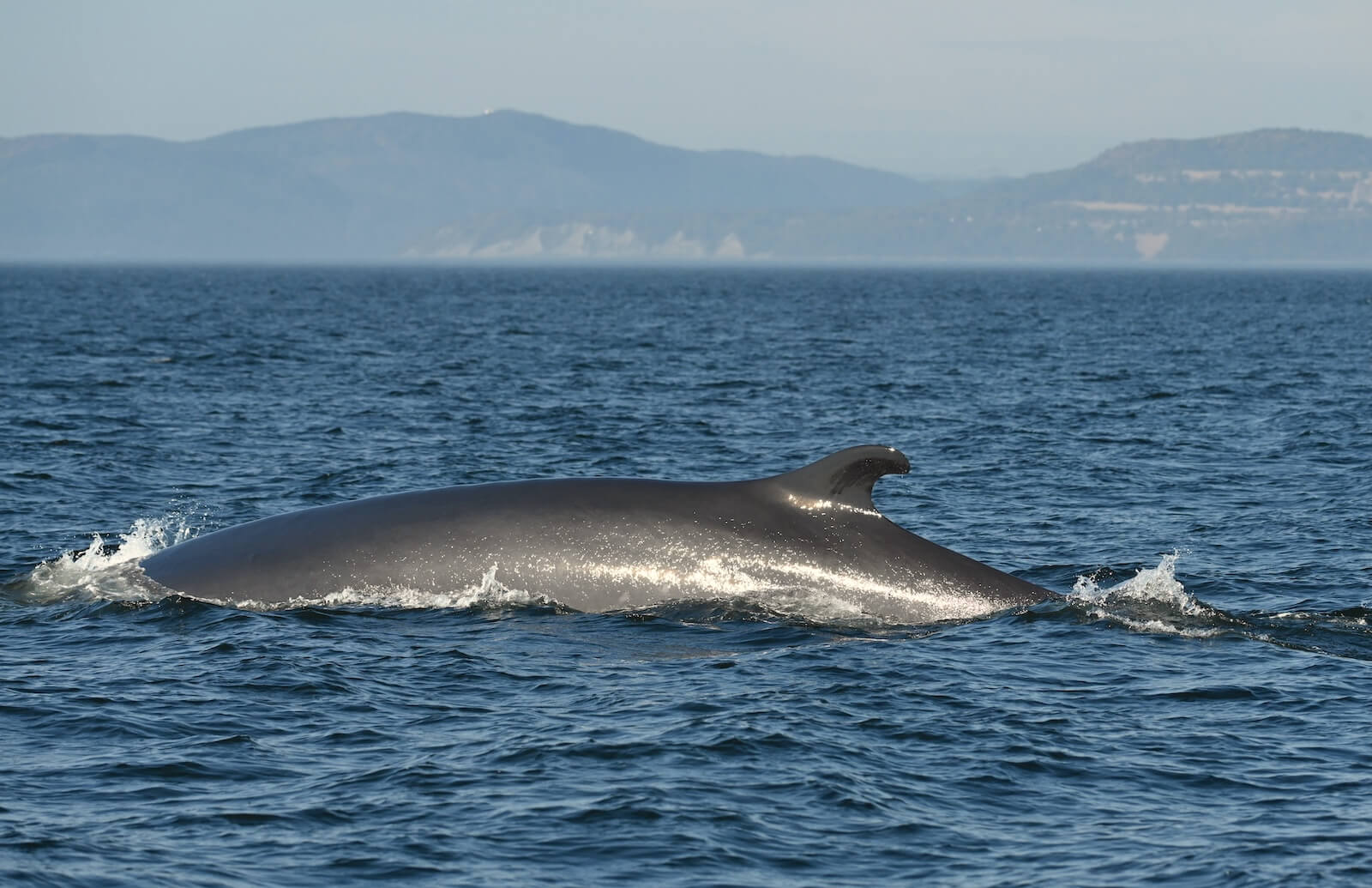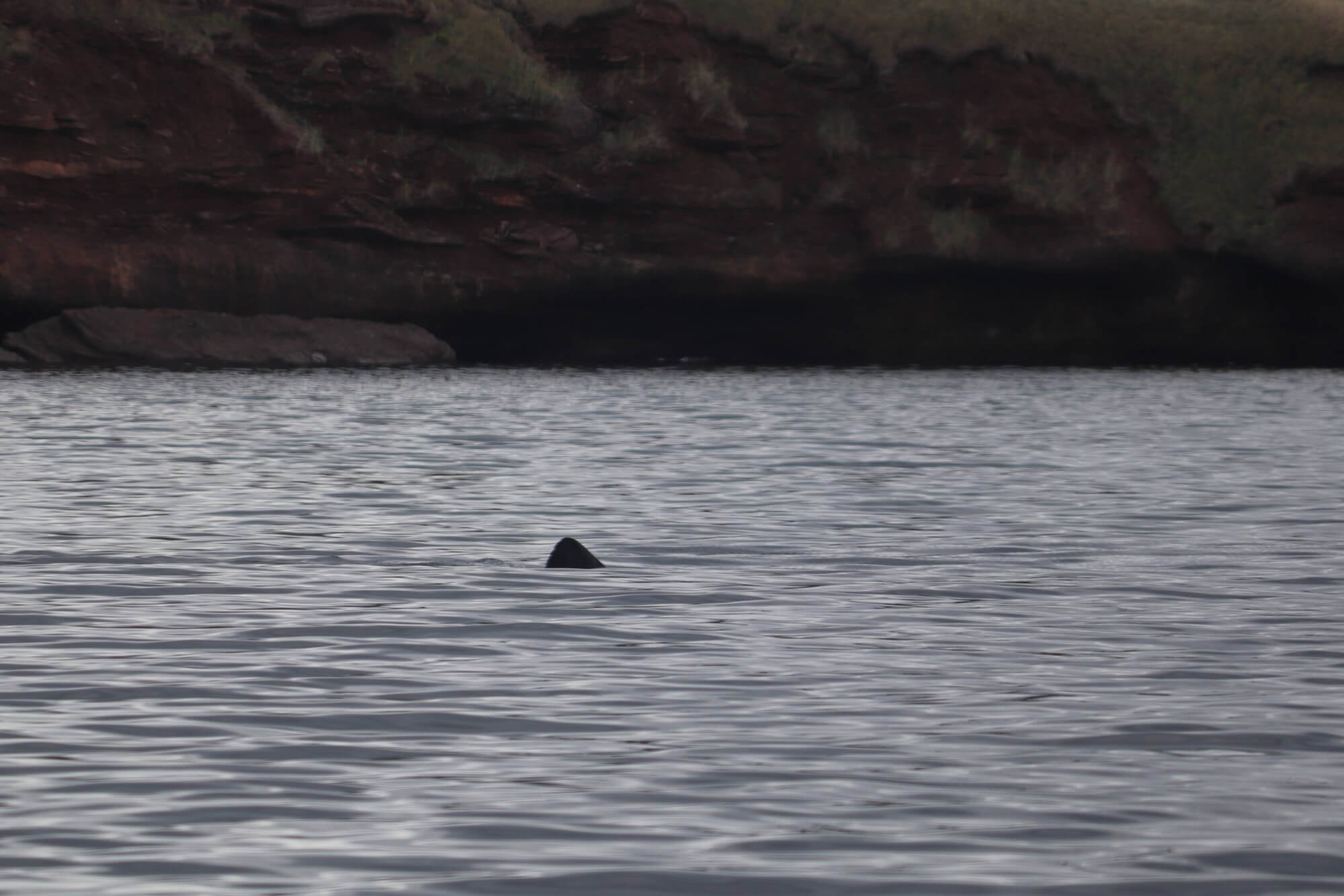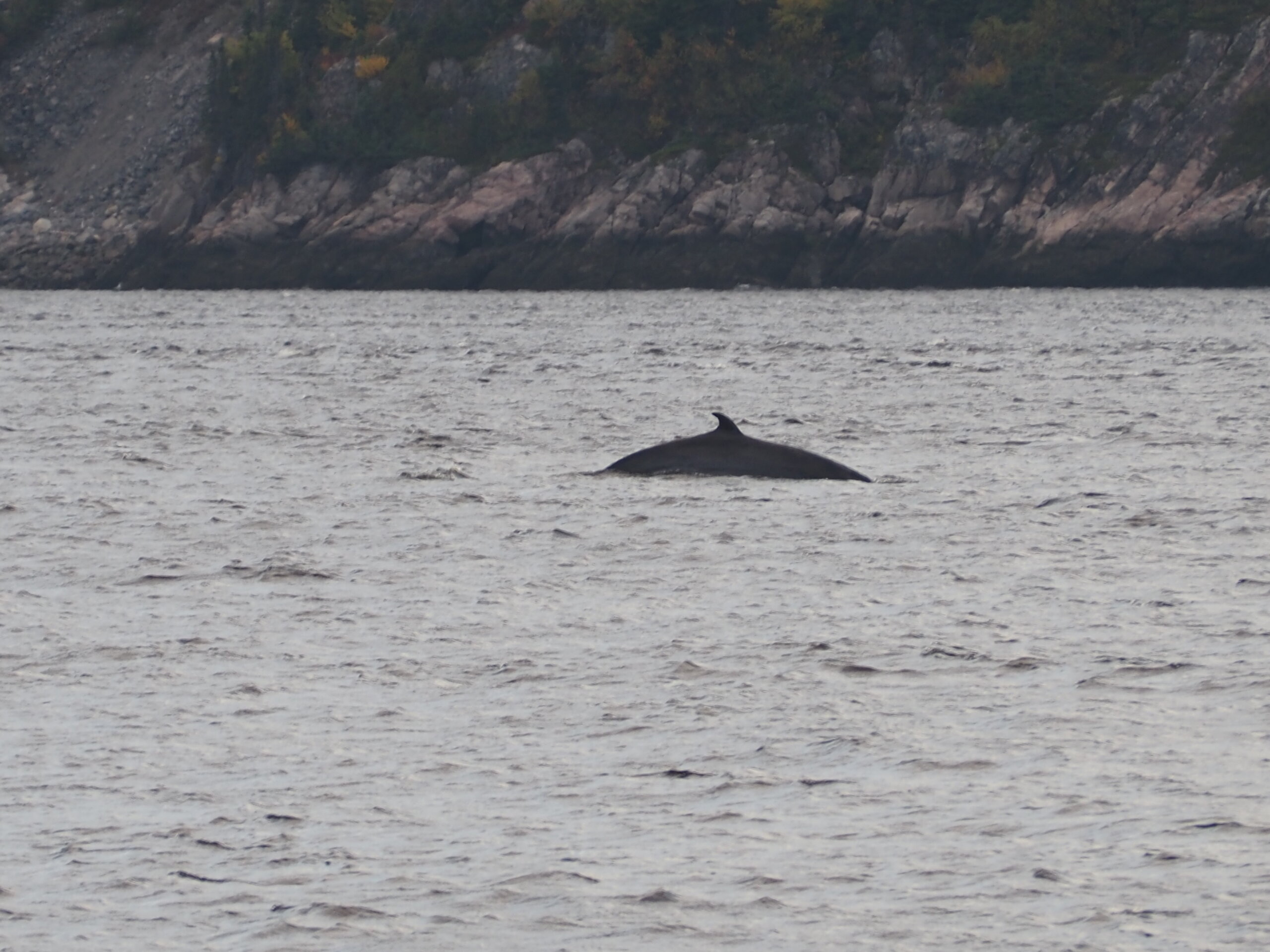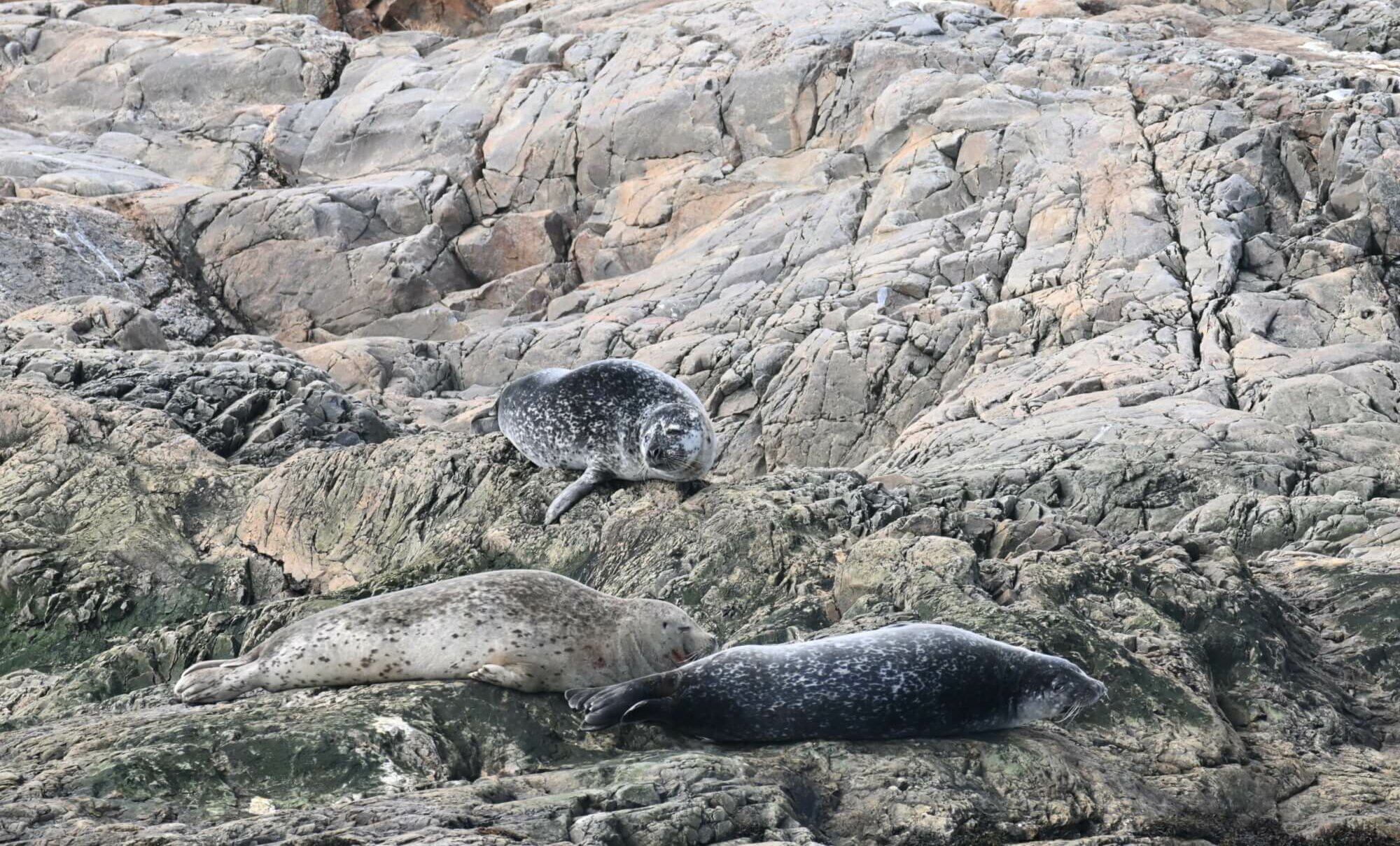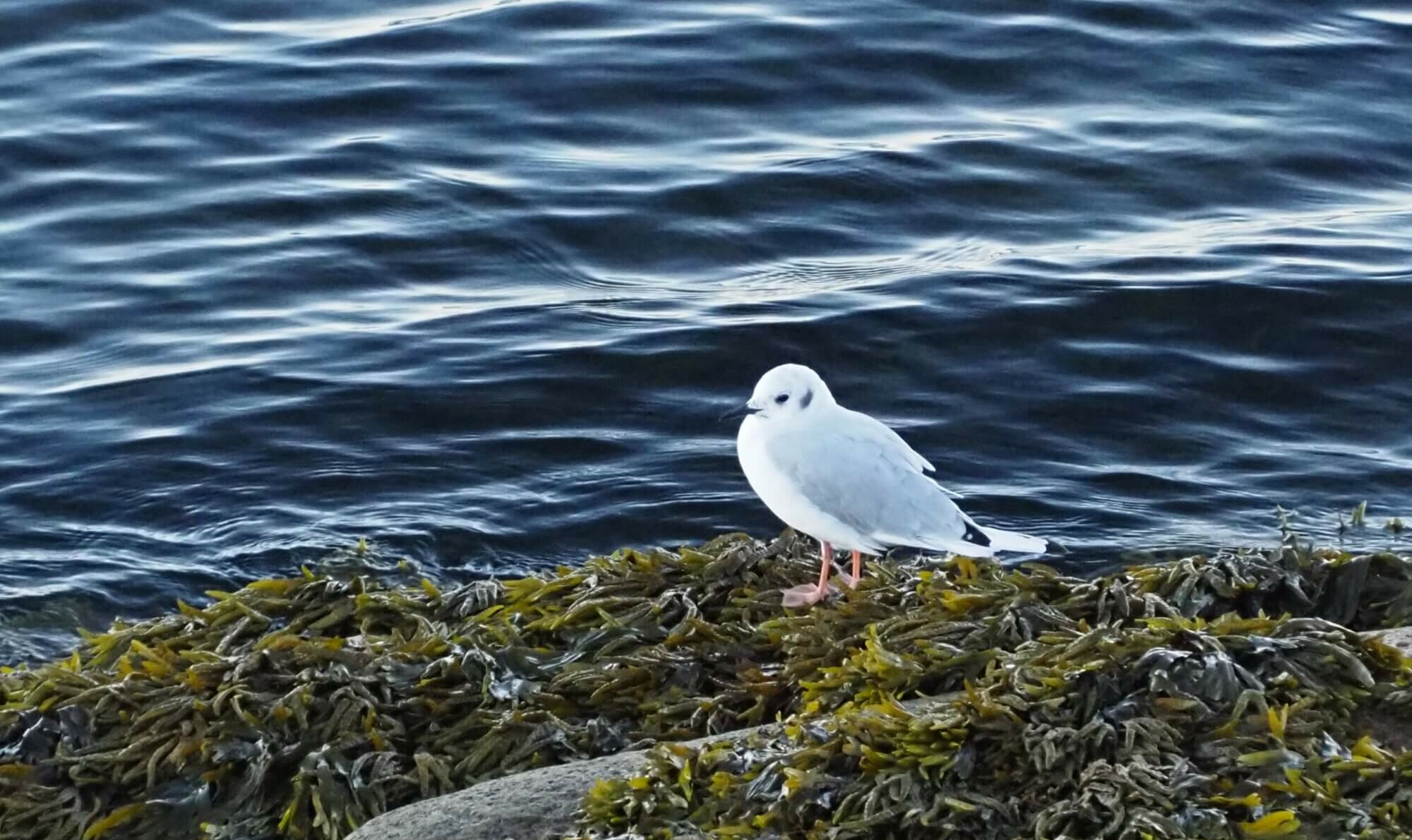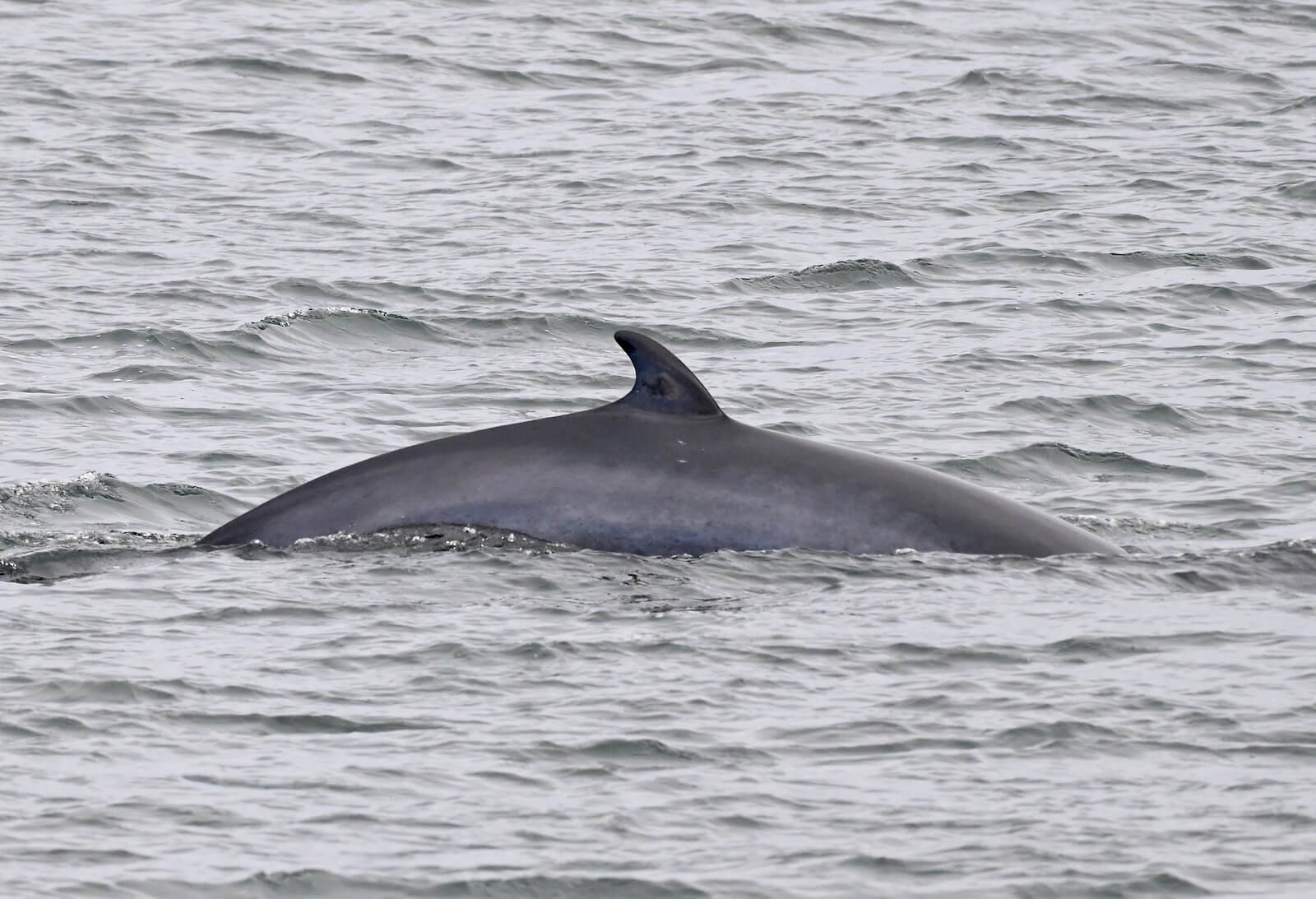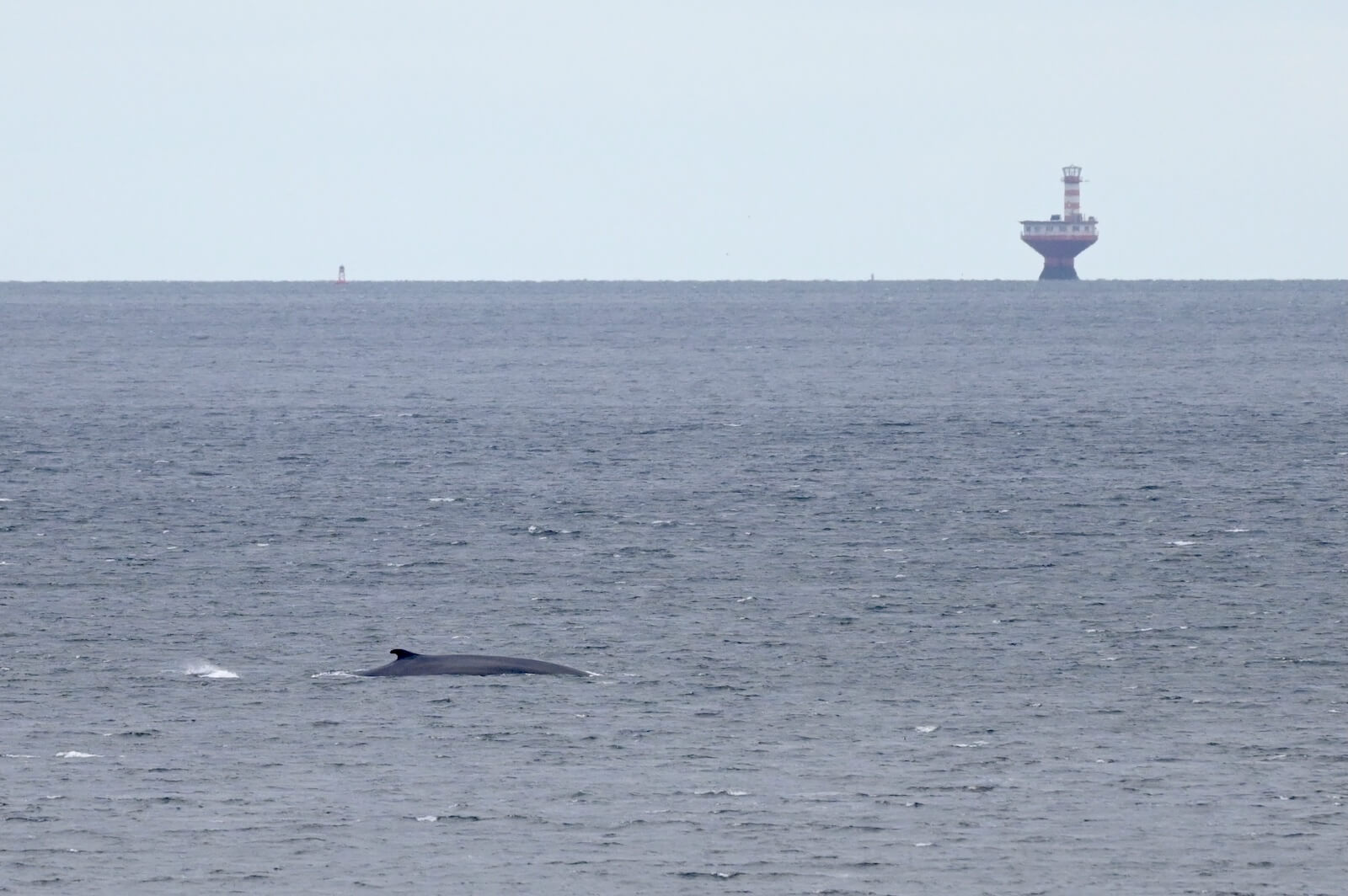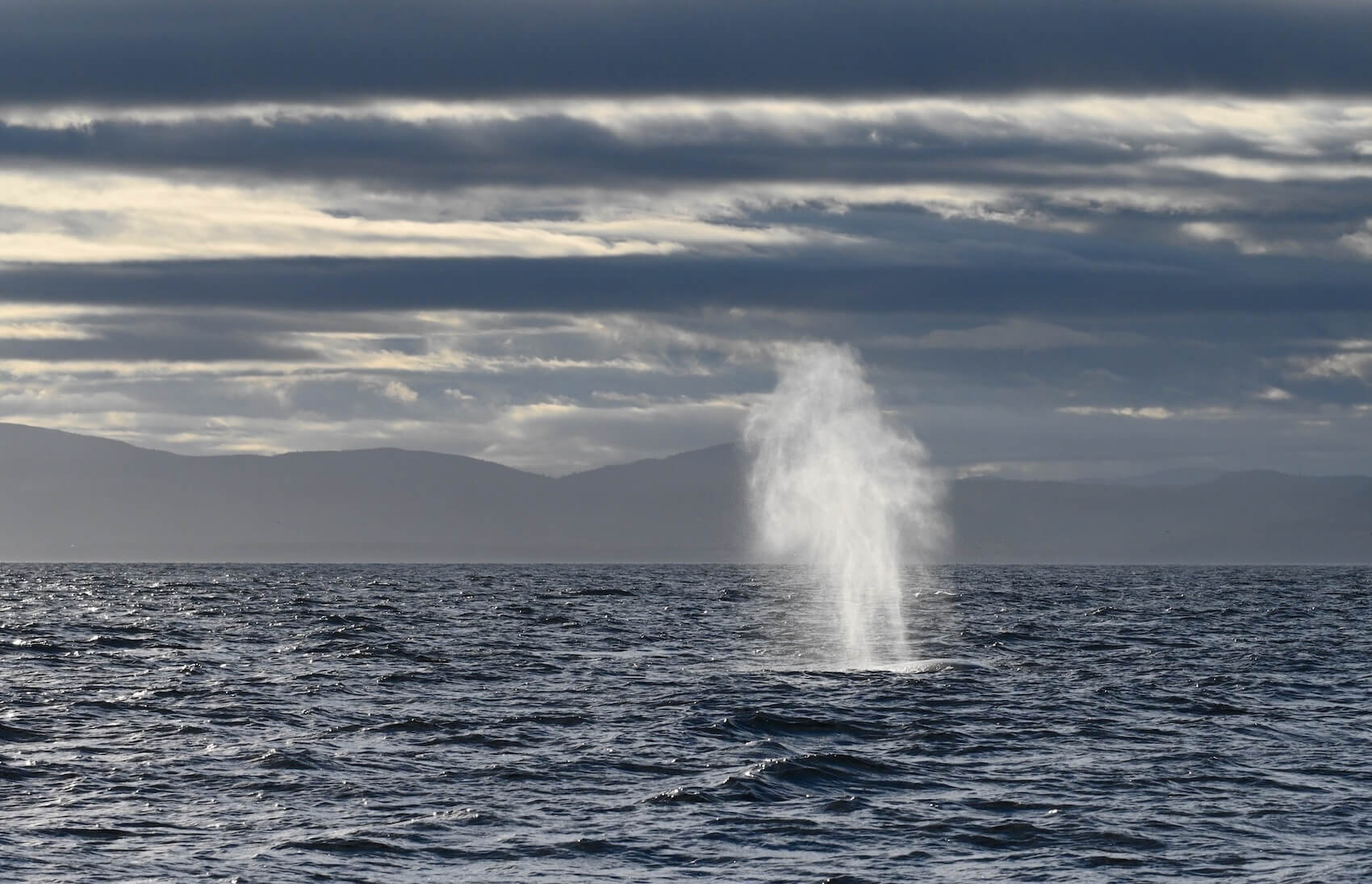A blue whale here, a blue whale there: These giants of the sea have been surprising us with their powerful blows all over the estuary! One individual was reported in Franquelin and at least five others were identified in the Saguenay–St. Lawrence Marine Park. Also reported were fin whales and humpbacks, as well as a few minke whales. For some folks, the memorable encounters they enjoyed with these behemoths will remain with them for years to come thanks to the animals’ grace and fascinating life stories.
Big blows in the estuary
A recently arrived Côte-Nord resident exclaimed that last Sunday she had her first encounter with a blue whale in the Marine Park. And she had every reason to be impressed! Blue whales measure between 21 and 28 metres long and can weigh up to 110 tonnes.
A few days later, a naturalist also shared a moment with one of these giants: “I was lucky enough to bump into B246, a.k.a. Jaw-Breaker early yesterday evening. Observation conditions were incredible: We could clearly hear the spout of this magnificent blue whale.” Having managed to film the tail lift of this female (known to the Mingan Island Cetacean Study [MICS]) since 1991, he adds: “The feeling of having experienced such a magical and unique moment brought tears of joy to my eyes.” Whales have a knack for making us experience a whole range of emotions!
Four other blue whales were identified in the Marine Park area last week: B112 (Torishinto), B197 (Pleiades), B369 (Soidal), and B091. Whenever it dove, the latter would show its caudal fin, a small piece of which is missing. Whether it was caused by a collision, an entanglement, or some kind of altercation, this mark is nevertheless an effective way to identify it!
An individual was also passing through Franquelin: “Very high spout, so it was definitely a blue. Quite far out, but it was there!” says the observer. Also reported from these waters were several minke whales, harbour porpoises and seals.
Family ties
In addition to about twenty harbour porpoises, the humpback whale H944 and the fin whale Zipper (Bp097) in the estuary, a reunion has taken place in recent days. “We had the good fortune to see in the same area Ti-Croche and Bp935, the two “children” of Capitaine Crochet,” one naturalist and wildlife photographer shares excitedly. Born in 2007 and 2009, these two fin whales are indeed the offspring of the late Capitaine Crochet (Bp050), one of the Marine Park’s most celebrated females. A few other fin whale family trees have been established in the St. Lawrence, notably for humpback whale Tic Tac Toe (H509) and her descendants, the most well known of which is undoubtedly Aramis (H689).
To determine the relationship between two whales, there are a number of indicators that scientists can use, including recurrent observations of a female accompanied by a smaller individual. Analysis of tiny pieces of skin taken from the animals called biopsies also can lead to some surprising conclusions with regard to kinship. Certain physical traits can also be a clue: For Ti-Croche, for example, it was the careful observation of the colour pattern on its flank that confirmed that this was indeed the same youngster accompanying Capitaine Crochet in a photo taken in 2009!
Sharks, seals, and rorquals
“We were able to observe a basking shark in the Percé area, right next to the wharf on Bonaventure Island,” reported one observer on September 19. The second largest fish in the world, basking sharks average between 7 and 11 metres long. These planktivores feed not only on plankton but also on small crustaceans, which they filter and ingest as they swim, a lot like North Atlantic right whales!
A minke whale and a few seals were also observed in the area. Pinnipeds have also been reported from the cove known as Anse aux Cousins, while a minke whale was spotted near the docks in Baie-des-Sables.
In recent days, large rorquals have been reported to be consistently present in Gaspé Bay. This past Thursday, according to one cruise ship operator, “five fin whales, one humpback, and several minke whales” were swimming in these waters. On the other side of the St. Lawrence, in the Mingan region, a minke whale and a host of seabirds dot the landscape.
Wonders in Saint-Irénée
“Last Friday, between 2 and 5 in the afternoon, there were at least a dozen belugas. Sunday was great: At 11 a.m., we had three belugas. And on Tuesday at around 5 in the evening, we had three more!” One resident doesn’t hide that she is amazed to see these little white whales not far from her home in the Charlevoix region.
From the Marine Mammal Interpretation Centre in Tadoussac, several individuals were also lucky enough to spot a few belugas as well as a very active minke whale off the rocks. Another observer also reported the presence of the smallest of the rorquals near L’Anse-Saint-Jean in the Saguenay Fjord.
Where are the whales this week? Observation map
These data were reported by our network of observers. They give an idea of the presence of whales and in no way represent the actual distribution of whales in the St. Lawrence. Just for fun! Click on the whale or seal icons to discover the species, the number of individuals, additional information or photos of the sighting. To enlarge the map, click on the icon in the top right-hand corner. The map works well on Chrome and Firefox, but not so well on Safari.
To display the list of sightings, click on the icon in the top left-hand corner.
Thanks to all our collaborators!
Special thanks go out to all our observers who share their love for marine mammals with us. Your encounters with cetaceans and pinnipeds are always a pleasure to read and discover.
On the water or from shore, it is your eyes that give life to this column.
- Marie-Andrée Charlebois
- Guylaine Côté
- Thalia Cohen-Bacry
- Laeticia Desbordes
- Hélène Guitton
- Charlotte Meunier
- Pascal Pitre
- Renaud Pintiaux
- Diane Ostiguy
- René Roy
- Guillaume Savard
- Guy Synnott
And all the others!
Additionally, we would like to acknowledge the following teams that also share their sightings:
Centre d’éducation et de recherche de Sept-Îles (CERSI)
Station de recherche des Îles Mingan (MICS)
Réseau d’observation des mammifères marins (ROMM)
Réseau québécois d’urgence pour les mammifères marins (RQUMM)
Groupe de recherche et d’éducation sur les mammifères marins (GREMM)
Mériscope
Would you also like to share your observations?
Have you seen any marine mammals in the St. Lawrence? Whether it’s a spout offshore or just a couple of seals, drop us a line and send your photos to [email protected]!


